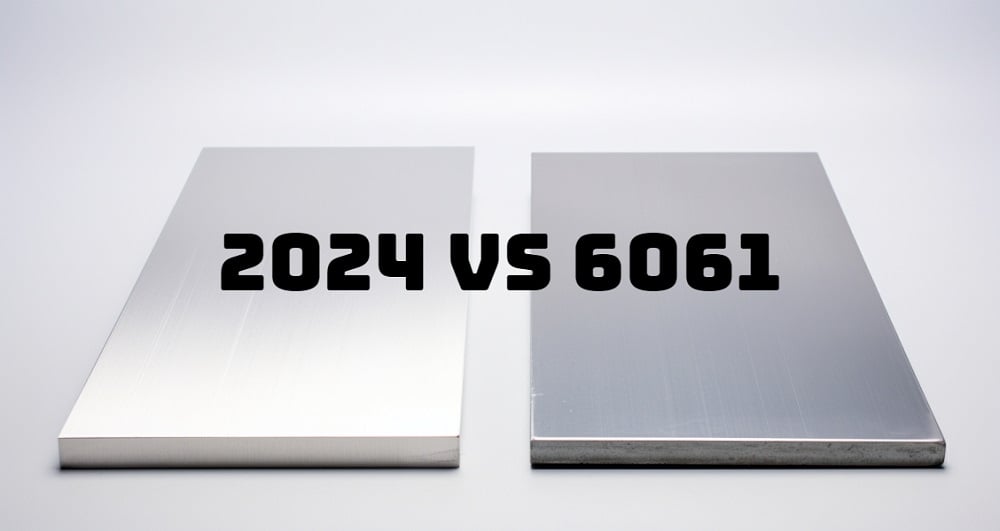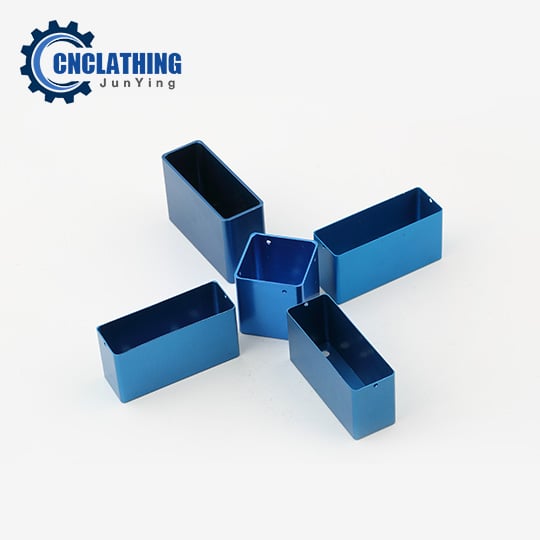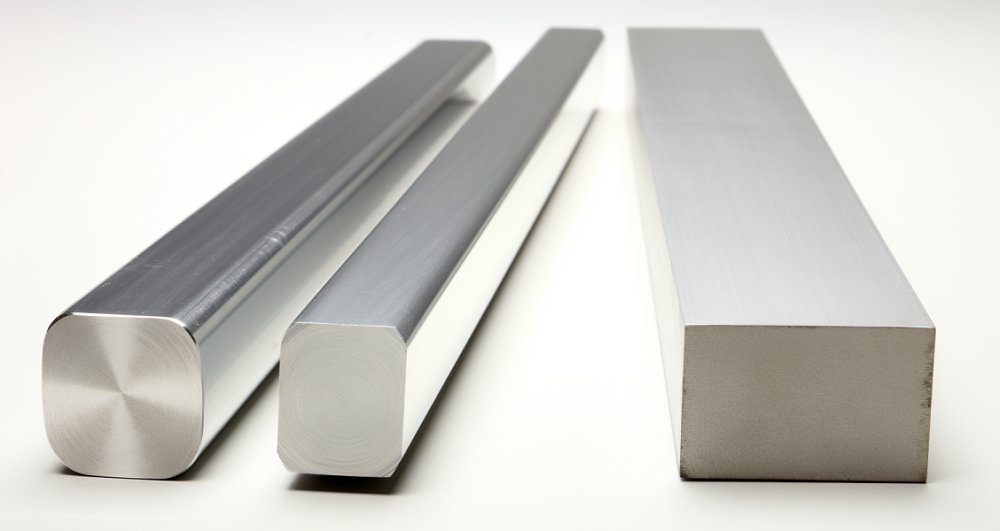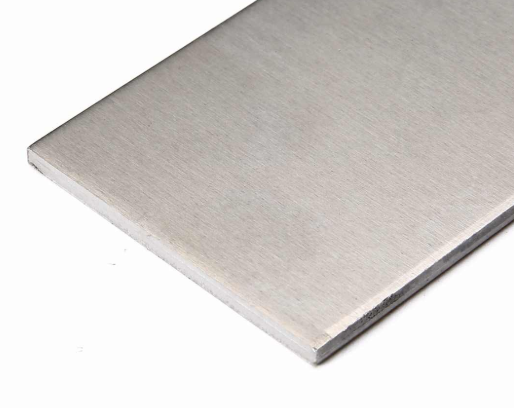Aluminum is mass-produced and utilized across a broad spectrum of industrial, commercial, and residential applications. This metal is incredibly versatile, making it suitable for a seemingly endless array of purposes. However, its diversity and adaptability also mean that selecting the right aluminum alloy for your specific application can be challenging. Manufacturers, product developers, and other business entities must carefully plan and assess their objectives to choose the most suitable alloy option for their particular products, projects, systems, or applications. Two aluminum alloys commonly selected for a variety of uses are 2024 and 6061 aluminum plates. In this blog post, we will explore the characteristics of each alloy and compare their similarities and differences.

Basic Introduction to 2024 and 6061 Aluminum
In line with the aim of providing clarity on aluminum alloys, this article will focus on highlighting the distinctions between 2024 aluminum and 6061 aluminum. Before we delve into a comparative analysis, let’s get acquainted with each aluminum grade individually.
What is 2024 Aluminum?
Aluminum 2024 is known for its high strength and is commonly used in aerospace applications. It was first introduced in the 1930s and has been a significant material in the aircraft industry ever since. This particular alloy is known for its high yield strength and relatively good fatigue resistance. It is less corrosion-resistant than many other aluminum alloys but can be treated to improve this characteristic. 2024 aluminum is part of the 2xxx series of aluminum, which is known for its use in applications requiring high strength-to-weight ratios.
The primary composition of 2024 aluminum includes 4.3 to 4.5% copper, 0.5 to 0.6% manganese, and 1.3 to 1.5% magnesium. Additionally, it contains smaller amounts of other elements such as iron, silicon, zinc, and others to enhance its properties.
What is 6061 Aluminum?
As previously introduced in the context of 6061 and 7075 aluminum alloys, Aluminum 6061 stands out as one of the most versatile and widely utilized heat-treatable aluminum alloys. This alloy is renowned for its combination of corrosion resistance and mechanical properties. It’s easy to work with, can be extruded into various shapes, and is a favorite among aluminum grades for a multitude of applications, including marine and automotive components.
Aluminum 6061 is made up of 95.8 to 98.6% aluminum, 0.8 to 1.2% magnesium, and 0.4 to 0.8% silicon. It also has trace amounts of other elements such as copper (0.15 to 0.40%) and chromium (0.04 to 0.35%), which contribute to its strength and resistance properties. It belongs to the 6xxx series aluminum alloys, which are distinguished by their use of magnesium and silicon as their primary alloying elements.
With a fundamental understanding of the 2024 and 6061 aluminum grades, we can now explore the nuances that distinguish these two alloys, which will be covered in the following sections of our comparative review.
What Are the Differences Between Aluminum 2023 and Aluminum 6061?
Aluminum 2023 and 6061 are both used in various applications, offering a range of beneficial properties. However, there are distinct differences that set them apart in terms of alloy series, chemical composition, mechanical properties, and specific uses.
To provide a clear understanding, we will delve into the details of each attribute and draw comparisons between the aluminum alloy grades of 2023 and 6061. The purpose is to equip manufacturers with the necessary knowledge to make informed decisions when selecting the appropriate alloy for their needs. We will compare the following parts:
2024 vs 6061 Aluminum: Alloy Series
The 2024 aluminum grade is known for its high-strength properties and is available in different temper grades, which include:
2024-O: annealed (soft and formable state)
Heat treated 2024-T3 (solution heat-treated and then cold worked)
Heat treated 2024-T4 (solution heat-treated and naturally aged)
Heat treated 2024-T351 (solution heat-treated and stress-relieved by stretching)
Similarly, the 6061 aluminum alloy also comes in various tempers, offering a range of mechanical properties:
- 6061-O: annealed (most formable version of the alloy, “soft”)
- Heat treated 6061-T4 (solution heat-treated and naturally aged)
- Heat treated 6061-T6 (solution heat-treated and artificially aged)
Heat treated 6061-T651 (solution heat-treated, stress-relieved by stretching, and artificially aged)
The temper designations indicate the different treatments the alloys have undergone to achieve certain mechanical properties, such as strength, ductility, and hardness. The 2024 series, especially in the T3 and T4 tempers, is known for its high strength and is commonly used in aerospace components. The 6061 series, on the other hand, is recognized for its versatility and balance of strength, weldability, and corrosion resistance, making it suitable for a broad range of applications in structural, automotive, and architectural fields.
2024 vs 6061 Aluminum: Chemical Composition
The chemical compositions of 2024 aluminum and 6061 aluminum alloys are distinct, with each offering different properties due to the varying amounts of alloying elements.
The table below summarizes the differences in chemical composition between 2024 aluminum and 6061 aluminum.
2024 vs 6061 Aluminum: Chemical Composition Comparing Table
| Element | 2024 Aluminum | 6061 Aluminum |
| Aluminum | 90.7 – 94.7% | 95.85 – 98.56% |
| Copper | 3.8 – 4.9% | 0.15 – 0.40% |
| Magnesium | 1.2 – 1.8% | 0.8 – 1.2% |
| Manganese (Mn) | 0.30 – 0.9% | 0.0 – 0.15% |
| Silicon | 0.50% max | 0.4 – 0.8% |
| Zinc | 0.25% max | 0.0 – 0.25% |
| Titanium (Ti) | 0.15% max | 0.0 – 0.15% |
| Chromium | 0.10% max | 0.04 – 0.35% |
| Iron (Fe) | 0.50% max | 0.0 – 0.7% |
| Other elements | Each 0.05% max, total 0.15% max | Each 0.05% max, total 0.15% max |
2024 aluminum alloy is known for its high copper content, which contributes to its high strength, making it suitable for the aerospace industry where strength-to-weight ratio is critical. On the other hand, 6061 aluminum contains less copper but a higher percentage of silicon and magnesium, enhancing its formability and corrosion resistance, making it a popular choice for structural applications.
2024 vs 6061 Aluminum: Mechanical Properties
When evaluating 2024 and 6061 aluminum alloys, one must consider their mechanical properties to determine the most suitable applications for each. Below is a comparison based on several key attributes:
2024 vs 6061 Aluminum: Yield Strength
Yield strength is the stress at which a material begins to deform plastically. 2024 aluminum typically has a higher yield strength than 6061 aluminum, meaning it can withstand higher stress before it begins to deform permanently.
2024 vs 6061 Aluminum: Tensile Strength
Ultimate tensile strength is the maximum stress a material can withstand while being stretched or pulled before necking, which is when the specimen’s cross-section starts to significantly contract. 2024 aluminum generally has a higher tensile strength compared to 6061, making it more resistant to breaking under tension.
2024 vs 6061 Aluminum: Corrosion Resistance
2024 aluminum, with its high copper content, is naturally less corrosion-resistant than 6061, making it more susceptible to corrosion, particularly when exposed to moisture or chemicals. To mitigate this, 2024 is often clad with a more corrosion-resistant alloy. In contrast, 6061 aluminum’s chemistry, which includes magnesium and silicon, provides it with a protective layer that inherently resists corrosion better. Therefore, for applications where exposure to corrosive environments is a concern and material longevity is crucial, 6061 is generally the preferred choice due to its superior corrosion resistance.
2024 vs 6061 Aluminum: Elasticity
The modulus of elasticity measures a material’s resistance to being deformed elastically (i.e., non-permanently) when a force is applied. Both 2024 and 6061 aluminum alloys have a similar modulus of elasticity, indicating comparable stiffness characteristics.
2024 vs 6061 Aluminum: Thermal Conductivity
This property indicates how well a material can conduct heat. 6061 aluminum has a higher thermal conductivity than 2024 aluminum, making it a better choice for applications that require efficient heat dissipation.
2024 vs 6061 Aluminum: Electrical Resistivity
Electrical resistivity is a measure of how strongly a material opposes the flow of electric current. Both 2024 and 6061 aluminum alloys have relatively low resistivities, although 6061 typically has a lower resistivity, making it a slightly better electrical conductor.
2024 vs 6061 Aluminum: Material Hardness
Hardness is a measure of a material’s resistance to localized plastic deformation. Generally, 2024 aluminum is harder than 6061, which may influence wear resistance but also makes it less ductile.
2024 vs 6061 Aluminum: Machinability
Machinability refers to the ease with which a material can be machined. 6061 aluminum is known for its excellent machinability, superior to that of 2024, which is harder and tends to be more difficult to machine.
2024 vs 6061 Aluminum: Weldability
Weldability is a significant differentiator between 2024 and 6061 aluminum. 6061 is renowned for its excellent weldability, accommodating a variety of welding techniques without the need for specialized procedures. This is partly due to its particular alloying elements, which respond well to welding heat without significant weakening. On the other hand, 2024 aluminum is generally considered poor for welding. Its high copper content increases the risk of cracking and makes it sensitive to welding heat, which can lead to structural integrity issues.
2024 vs 6061 Aluminum: Melting Point
The melting point of an aluminum alloy is a key factor in processes such as casting, forging, and heat treatment. While there isn’t a significant difference in the melting points of 2024 and 6061 alloys, 6061 typically has a slightly lower melting range of approximately 582°C to 652°C (1080°F to 1205°F), compared to the melting range of 2024, which is around 502°C to 638°C (935°F to 1180°F). This slight difference can affect the choice of alloy for high-temperature applications or processes.
2024 vs 6061 Aluminum: Weight
In terms of weight, both 2024 and 6061 aluminum alloys are chosen for applications where light weight is essential. However, 2024 aluminum, being the denser of the two and typically having a higher strength-to-weight ratio, is often used in aerospace applications where high strength is required. 6061, while not as strong as 2024, still offers a good strength-to-weight ratio making it suitable for structural applications that do not require the extreme strength of 2024.
Summy comparison table for the mechanical properties of 2024 and 6061 aluminum alloys:
| Property | 2024 Aluminum Alloy | 6061 Aluminum Alloy |
| Tensile Strength | 470 MPa (68,000 psi) | 310 MPa (45,000 psi) |
| Yield Strength | 325 MPa (47,000 psi) | 276 MPa (40,000 psi) |
| Elongation at Break | 20% in 50 mm (for T3 temper) | 12-17% in 50 mm (for T6 temper) |
| Modulus of Elasticity | 73.1 GPa (10.6 x 10^6 psi) | 68.9 GPa (10 x 10^6 psi) |
| Shear Strength | 283 MPa (41,000 psi) | 207 MPa (30,000 psi) |
| Hardness, Brinell | 120 (for T3 temper) | 95 (for T6 temper) |
| Fatigue Strength | 138 MPa (20,000 psi) | 96.5 MPa (14,000 psi) |
| Machinability | Good, but not as good as 6061 | Excellent |
| Corrosion Resistance | Good with anodizing | Excellent, especially with coating |
| Weldability | Poor, requires special techniques | Good, widely welded |
| Thermal Conductivity | 121-130 W/m-K | 151-202 W/m-K |
It is important to note that the specific values can vary depending on the temper and precise composition of each alloy. Manufacturers should refer to material datasheets or conduct testing to ensure the material selected meets the required specifications for their particular application.
2024 vs 6061 Aluminum: Common Applications
2024 Aluminum Applications
2024 aluminum alloy is known for its high strength and excellent fatigue resistance. Its primary applications are where high structural integrity is paramount. Key industries and uses include:
- Aerospace industry for aircraft structures, skin, and wing tension members due to its high strength to weight ratio and good fatigue resistance.
- Military applications, including military vehicles and munitions where the material’s resilience is critical.
- Commercial applications involving high-strength parts such as gears, shafts, and fasteners, which require the material’s toughness.
- Sports equipment where high strength is necessary, such as professional racing bicycles and baseball bats.
The main drawback of 2024 aluminum lies in its lower corrosion resistance, which is why it is often clad with a thin layer of aluminum alloy that provides better surface protection. This cladding enables its use in environments where it might be prone to corrosion without significant protection.
6061 Aluminum Applications
In contrast, the 6061 aluminum grade is renowned for its excellent corrosion resistance and versatility. Its wide range of applications covers several industries, including:
- Construction, where it’s used for building infrastructure such as bridges, railings, and frames due to its good balance of strength, toughness, and resistance to corrosion.
- Automotive industry, especially in the production of automotive parts such as wheels, chassis, and various trim components, where it provides a good strength-to-weight ratio and resistance to weather elements.
- Marine industry for the construction of yacht masts, small boat hulls, and deck components, benefiting from its resistance to corrosion in saltwater environments.
- Consumer products, including electronics casings, kitchen appliances, and furniture, where its aesthetic appeal and durability are advantageous.
- Manufacturing equipment and machinery, owing to its good machinability and weldability, which are essential for custom parts and assemblies.
6061’s superior corrosion resistance and workability make it a more versatile choice for applications that require a good balance between strength, weldability, and corrosion resistance, unlike the more specialized high-strength applications of 2024, which are typically limited by its lower corrosion resistance.
2024 vs 6061 Aluminum: Manufacturing Considerations
When comparing 2024 and 6061 aluminum alloys in terms of manufacturing, several key considerations come into play, each suited to different manufacturing needs and applications.
2024 Aluminum Manufacturing Considerations:
- Machinability: Although 2024 aluminum can be machined, it is not as easy to work with as 6061. Its high strength can lead to more rapid tool wear and requires careful handling to prevent cracking.
- Formability: In the annealed condition, 2024 can be formed but will require more force than 6061 due to its higher strength.
- Weldability: Welding 2024 is generally not recommended due to its high susceptibility to cracking. Special techniques and filler materials are necessary if welding is required.
- Heat Treatment: 2024 aluminum responds well to heat treatment, which can enhance its strength. However, this process must be carefully controlled to maintain material integrity.
- Corrosion Resistance: This alloy has poor corrosion resistance and often requires a protective coating, such as cladding or anodizing, to prevent environmental degradation.
6061 Aluminum Manufacturing Considerations:
- Machinability: 6061 is known for its excellent machinability. It is one of the most commonly used aluminum alloys for machining, with a good balance of strength, workability, and resistance to wear.
- Formability: 6061 can be easily extruded, rolled, or forged. It is also more ductile than 2024, allowing for more complex shaping and forming processes.
- Weldability: 6061 is very weldable using most methods and does not require overly specialized techniques, making it ideal for a broad range of fabrication jobs.
- Heat Treatment: While 6061 can also be heat-treated to enhance its strength, it is less responsive to heat treatment than 2024. It’s essential to consider the temper designation when heat treating to achieve the desired properties.
- Corrosion Resistance: With excellent corrosion resistance, 6061 does not require additional surface treatments unless for aesthetic purposes or further protection in harsh environments.
2024 vs 6061 Aluminum: Price Per Pound/KG
The cost of aluminum alloys can fluctuate based on market conditions, availability, demand, and processing requirements. Here’s a general comparison:
2024 aluminum price:
Price per pound: $3.50 – $4.50
Price per KG: $7.70 – $9.90
6061 aluminum price:
Price per pound: $1.25 – $2.50
Price per KG: $2.75 – $5.50
Price is always a crucial consideration in material selection. Generally, 6061 aluminum is less expensive than 2024 due to its widespread availability and ease of manufacturing. 2024 is usually more costly, not just in raw material costs but also due to additional expenses related to its manufacturing complexities, such as the need for protective coatings and the difficulties associated with machining and welding. For projects where budget constraints are a priority, and the additional strength of 2024 is not required, 6061 is often the preferred choice.
How to Distinguish Between Aluminum 2024 and Aluminum 6061?
Being able to differentiate between aluminum grade 2024 and aluminum grade 6061 is crucial for engineers and professionals working in industries where aluminum is extensively used. Selecting the correct type of aluminum is critical for the performance and longevity of a project, as each grade has unique properties that make it suitable for specific applications. Here are some practical ways to distinguish between these two common aluminum alloys:
- Check the Material Certificates:
The most straightforward way to distinguish between 2024 and 6061 aluminum is by checking the material certificates or mill test reports that come with the aluminum. These documents provide complete traceability and detail the chemical composition and mechanical properties of the material.
- Examine the Surface Finish:
Aluminum 2024 typically has a more shiny and silvery finish when compared to 6061, which can appear slightly duller. This difference is due to the distinct elemental composition of each alloy.
- Conduct a Hardness Test:
When a hardness test is performed, 2024 aluminum, which generally has a higher copper content, will typically be harder than 6061 aluminum. This can be assessed using a hardness tester, where the 2024 alloy will show higher hardness values.
- Perform a Chemical Spot Test:
A chemical spot test can help in distinguishing between the two alloys. For instance, a spot test with a solution containing a small percentage of phosphoric acid will react differently with each type of aluminum due to their different compositions. 2024 aluminum, with its higher copper content, might develop a darker stain in the test area compared to 6061, which has a lower copper content.
- Assess the Weight and Density:
Although not as precise as other methods, comparing the weight of identical volumes of 2024 and 6061 aluminum can be indicative. Since aluminum 2024 is typically denser due to its copper content, it will weigh slightly more than 6061 aluminum for the same volume.
- Analyze the Response to Heat:
2024 aluminum has different thermal treatment responses compared to 6061. When subjected to heat, 2024 aluminum, which is not as heat-treatable as 6061, will not exhibit the same increase in strength post heat treatment as 6061 does.
- Perform a Fracture Test:
In cases where material certifications are not available and a more destructive test is acceptable, a fracture test can reveal differences. When broken, the fracture surface of 2024 aluminum will typically appear more granular and rougher due to its higher copper content, whereas 6061 will show a more ductile fracture.
- Professional Alloy Verification:
For non-destructive testing, professional services can be used to verify the alloy type. Technologies such as X-ray fluorescence (XRF) can accurately determine the elemental composition without damaging the material.
When differentiating between 2024 and 6061 aluminum, consider combining several of these methods for a more accurate identification. Always refer to the material’s specifications and consult with professionals when necessary to ensure the correct aluminum grade is used for your specific application.
2024 vs 6064 Aluminum, Which One is Superior? Which One To Choose?
The immediate question that might arise is, “Which alloy is more appropriate for my specific project?” This is inherently an ambiguous question, as there isn’t a universal answer. Determining the most suitable aluminum alloy for a given application involves a deep understanding, alongside a process of experimentation and refinement. The decision heavily relies on the unique specifications and demands of your project.
Each alloy boasts its own set of advantageous properties and possible uses. Selecting the ideal alloy for your project necessitates an informed and guided approach to choosing materials. We are committed to facilitating our clients in achieving the outcomes they seek. Should you need CNC machining services for 2024 or 6064 aluminum, we can provide test samples for your evaluation.







